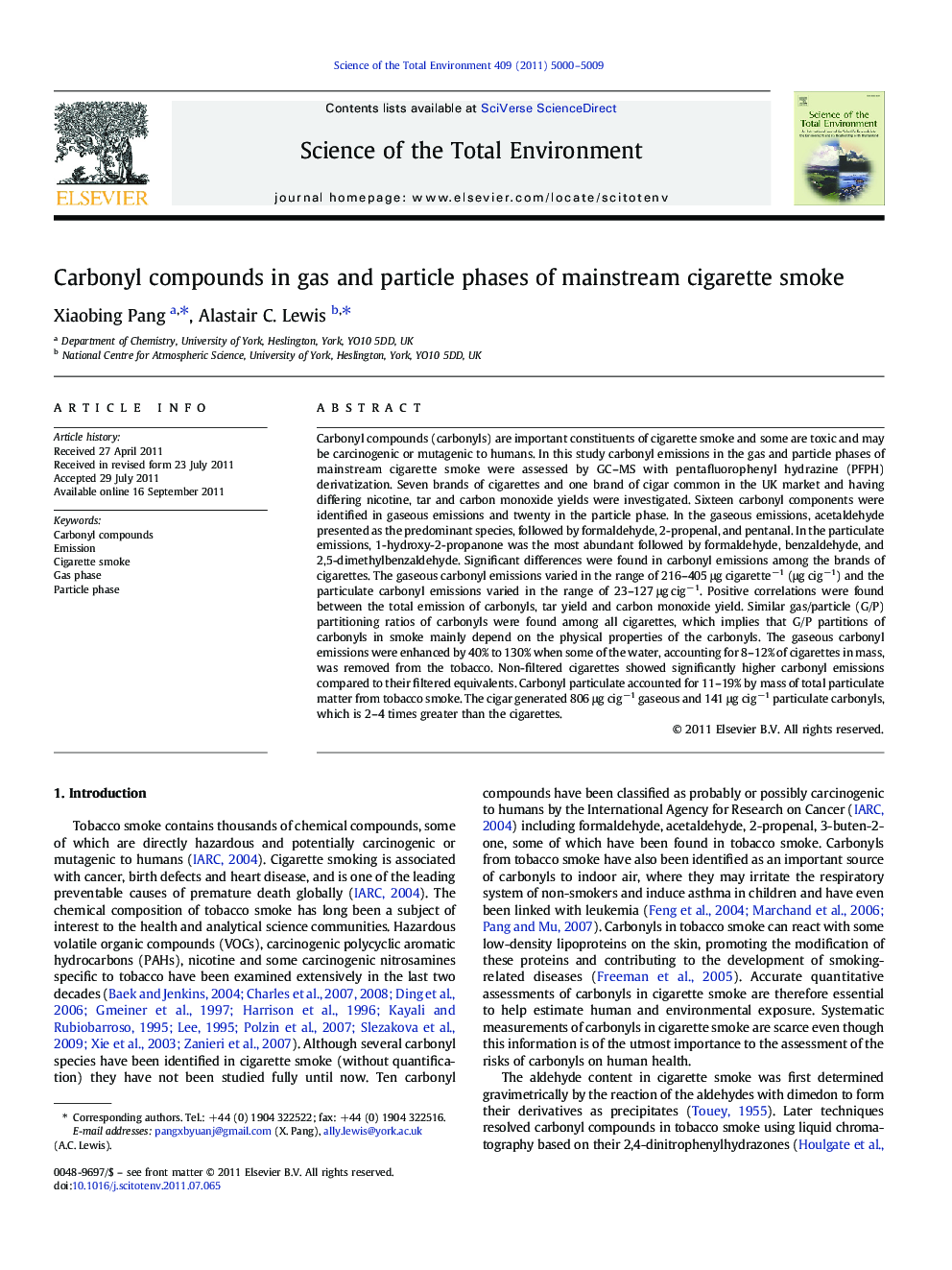| Article ID | Journal | Published Year | Pages | File Type |
|---|---|---|---|---|
| 4430174 | Science of The Total Environment | 2011 | 10 Pages |
Carbonyl compounds (carbonyls) are important constituents of cigarette smoke and some are toxic and may be carcinogenic or mutagenic to humans. In this study carbonyl emissions in the gas and particle phases of mainstream cigarette smoke were assessed by GC–MS with pentafluorophenyl hydrazine (PFPH) derivatization. Seven brands of cigarettes and one brand of cigar common in the UK market and having differing nicotine, tar and carbon monoxide yields were investigated. Sixteen carbonyl components were identified in gaseous emissions and twenty in the particle phase. In the gaseous emissions, acetaldehyde presented as the predominant species, followed by formaldehyde, 2-propenal, and pentanal. In the particulate emissions, 1-hydroxy-2-propanone was the most abundant followed by formaldehyde, benzaldehyde, and 2,5-dimethylbenzaldehyde. Significant differences were found in carbonyl emissions among the brands of cigarettes. The gaseous carbonyl emissions varied in the range of 216–405 μg cigarette−1 (μg cig−1) and the particulate carbonyl emissions varied in the range of 23–127 μg cig−1. Positive correlations were found between the total emission of carbonyls, tar yield and carbon monoxide yield. Similar gas/particle (G/P) partitioning ratios of carbonyls were found among all cigarettes, which implies that G/P partitions of carbonyls in smoke mainly depend on the physical properties of the carbonyls. The gaseous carbonyl emissions were enhanced by 40% to 130% when some of the water, accounting for 8–12% of cigarettes in mass, was removed from the tobacco. Non-filtered cigarettes showed significantly higher carbonyl emissions compared to their filtered equivalents. Carbonyl particulate accounted for 11–19% by mass of total particulate matter from tobacco smoke. The cigar generated 806 μg cig−1 gaseous and 141 μg cig−1 particulate carbonyls, which is 2–4 times greater than the cigarettes.
► Carbonyl emission factors in both gas (16 species) and particle (20 species) phases from tobacco smoke were investigated. ► Sensitive GC/MS method with pentafluorophenyl hydrazine (PFPH) derivatisation was used in this study. ► Formaldehyde, acetaldehyde, 1-hydroxy-2-propanone were found in as dominant carbonyls. ► Positive correlation was found between total emission of carbonyls, tar yield and carbon monoxide yield.
